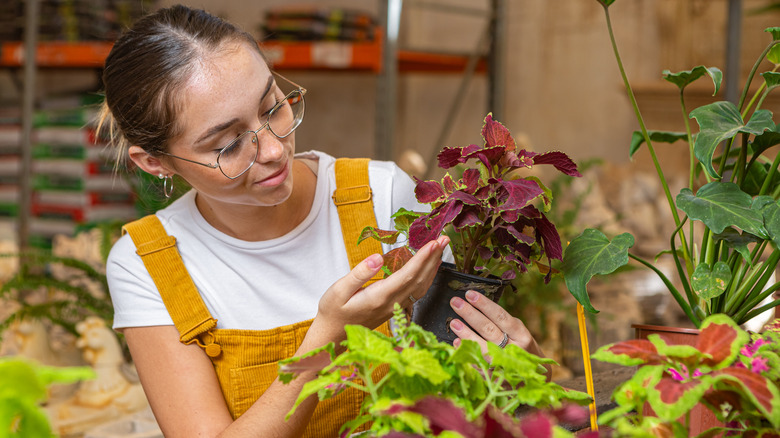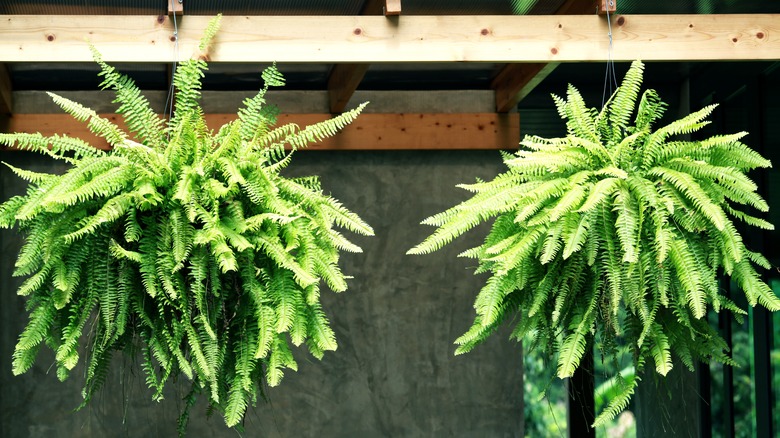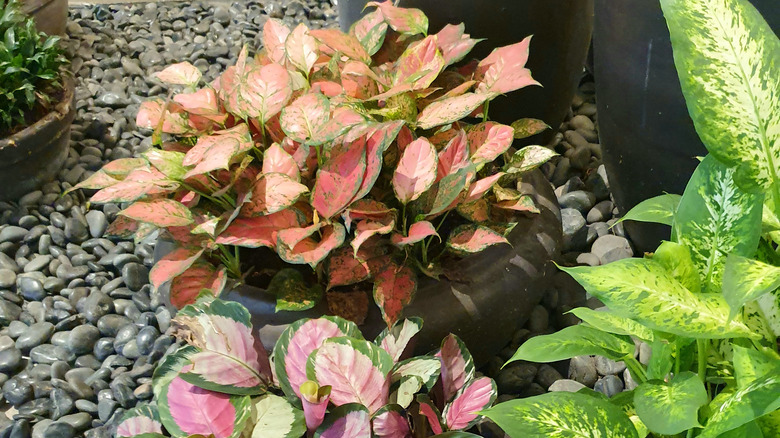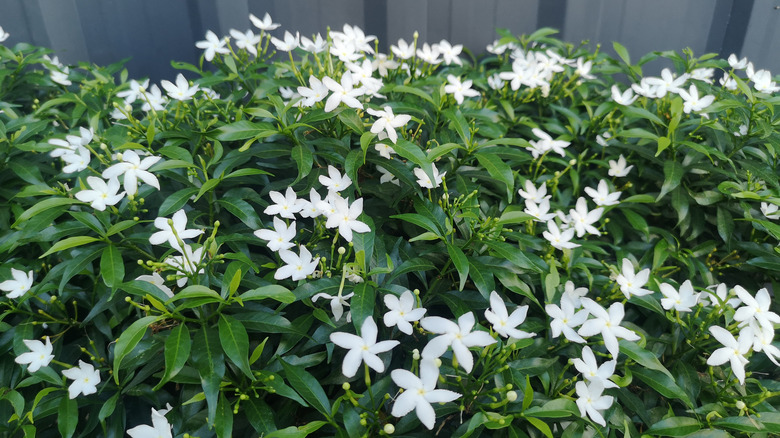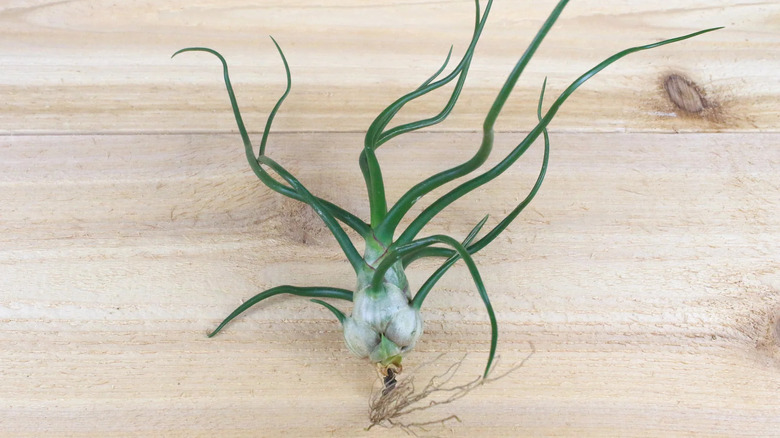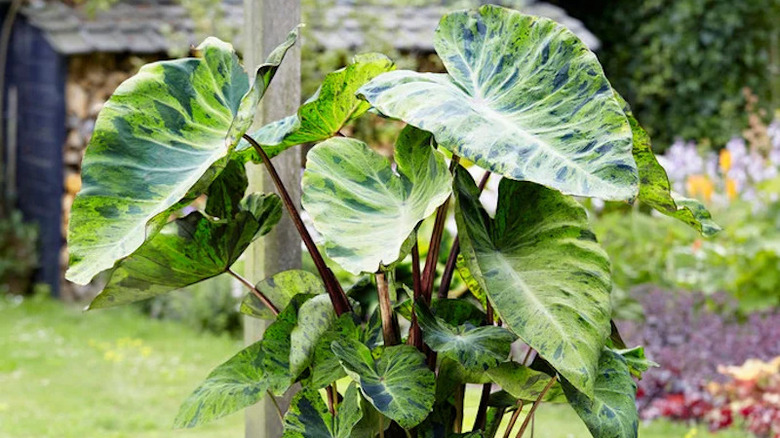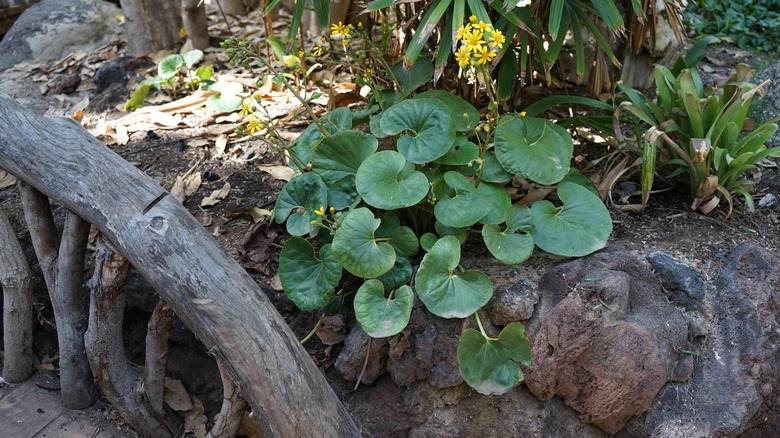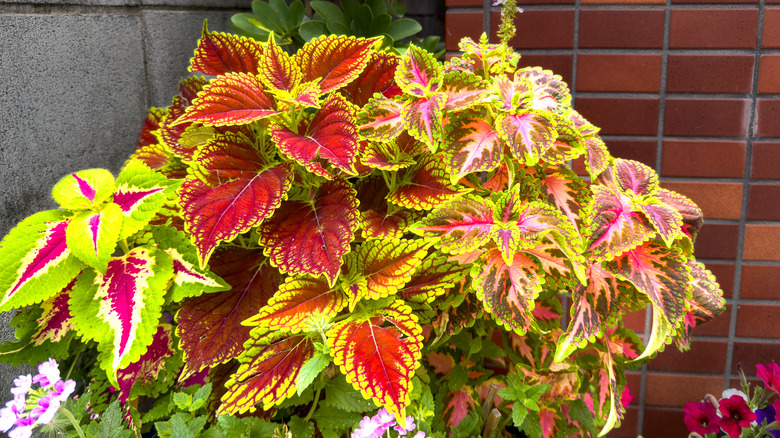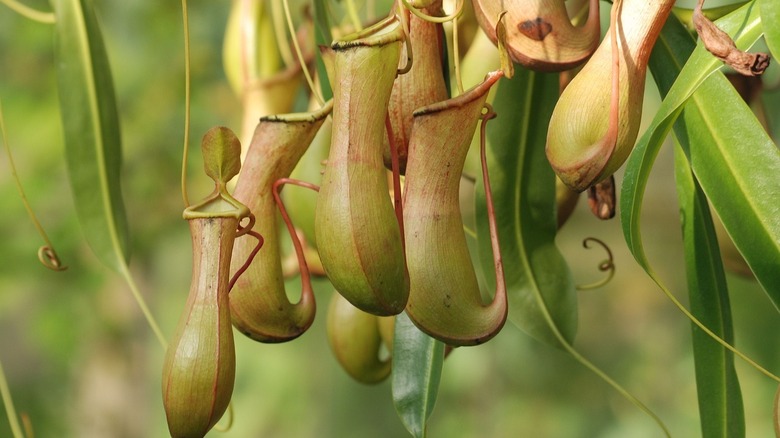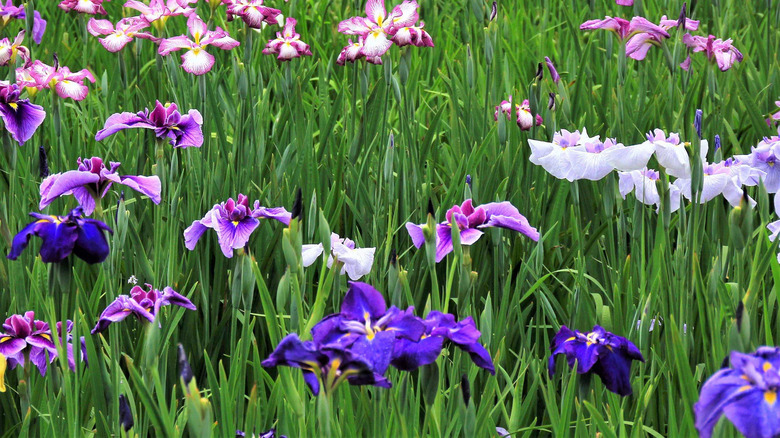9 Plants You Should Never Grow In Dry Climates
Anyone living in the Southwest and the western plains knows firsthand how arid the conditions are. The Southwest has a hot desert climate with hot summers that climb well over 100 degrees but mild winters and little rainfall. The western plains sit on the border between the arid Southwest and humid East, experiencing wild temperature fluctuations and unreliable weather. Because of these unique conditions, not all plants can thrive in these states, especially hot and tropical plants. The temperature isn't the only thing to consider. Rainfall and humidity also play an important role.
Many tropical plants are easy to grow in warm weather, but only with consistent watering and humidity throughout the year. If you live in a warm climate but the land is prone to droughts, dry spells, and arid air, many tropical species cannot thrive. Fortunately, many plants do grow in dry climates, so you're not without options. But to ensure your landscaping thrives instead of wilts, here are the species that should never be grown in arid conditions.
Boston Fern fronds droop and curl up without enough moisture in the air
Boston ferns are popular ornamental plants for balconies, lanais, patios, and porches, where they're often hung from decorative hanging pots. These ferns are known for their long and vibrant feathery fronds that arch from a center stalk. The foliage is beautiful when healthy, but starts browning at the tips when the plants don't receive enough humidity. These tips take on a crispy appearance that can only be remedied by fixing their living conditions and trimming away the brown fronds.
The trendy ferns are native throughout Central and South America, as well as Florida and the Caribbean Islands. They need moist soil, especially in their early years, before reaching maturity. Once fully grown and fully established, certain cultivars can survive bouts of dryness, but prolonged exposure isn't recommended. Instead, most Boston ferns require consistently moist soil, which can be challenging in hot climates. Some gardeners recommend double potting and lining a larger container with moss to help retain moisture in dryer weather.
Prayer Plant leaves discolor with spots and yellow patches without proper watering
Calatheas, which are also popularly known as prayer plants, have a reputation for being finicky and tricky to care for. When kept indoors, many gardeners suggest keeping them in warm bathrooms where water vapor from plumbing fixtures can keep them moist. Raising these plants outdoors is even trickier unless you dwell in a humid climate. When the soil and air are too dry, the beautifully distinctive leaves curl inward and start turning brown.
Since this plant originates in the very humid and tropical northwestern Brazil, it's unsurprising that it requires a climate similar to rainforests. These plants thrive in lush jungles, so naturally, keeping them in moist soil alongside other plants is key to keeping them happy. Grouped trees and plants transpire and trap evaporated water, making it easier for Calathea plants to thrive beneath them. However, some plant pairs should never be grown together. If you live in a warm and humid climate, you'll need to make sure you aren't putting non-compatible species beside them, as this can lead to unhealthy conditions for your Calatheas.
Most Gardenia varieties lose flowers and leaves without high humidity levels
Gardenia flowers are among the most popular flowers to grace landscapes across the United States. The gardenia name refers to the genus that includes over 200 species of shrubs and small trees that bloom with white and yellow flowers in the summer and fall. In general, these plants require moist, humid conditions. Without a minimum of 50% humidity and moist soil, they'll drop flowers and leaves alike.
Gardenias originate from several places, including parts of Africa, Asia, Australia, and the Pacific islands. They grow in areas with fertile and moist soil, as well as high humidity, making most types intolerant of droughts. Due to their popularity, many grafted cultivars have been created, such as Gardenia thunbergii, which was specifically designed to thrive in drier areas. However, unless you directly seek out those bred for dry conditions, typical gardenias cannot grow in arid climates.
Mesic Tillandsia plants need frequent watering and high humidity compared to their xeric counterparts
Air plants, or Tillandsia, are some of the most popular home-grown succulents. They fall under the succulent classification and don't need moist soil since they don't require soil at all. Despite these characteristics, they aren't necessarily drought-tolerant. Certain species still need routine waterings with a mister, or there must be enough humidity in the air for them to thrive off of. In short, these plants are more complex than people realize, and most species fall into two major categories: mesic and xeric. Mesic air plants often have a distinguishable bulbous center, deep green coloring, and curling leaves. The leaves still curl when this plant is too dry, but in a more severe U-like shape. Their tips may also discolor and droop downward.
Mesic Tillandsia are native to the rainforests of South America and the Southeastern United States. In their natural environments, they're exposed to humidity and above-average rainfall. So, if you want to decorate your dry outdoor areas with these plants, look for species that fall under the xeric category.
Elephant ears' massive leaves turn dry and crispy without enough moisture
Elephant ears are massive leafy plants, often used as the focal point in outdoor gardens. Without enough humidity and moisture, the oversized heart-shaped leaves start to brown and turn into a crispy texture. These plants thrive in moist conditions so well that when planted near natural waterways, they can multiply and become invasive. They tend to invade local ecosystems when their environment is just right, so gardeners must do proper research before planting.
Ornamental elephant ears, the types most commonly planted in gardens, all fall under the same plant family but are classified under three different genera. These are found naturally in tropical regions of Australia, Asia, and Central and South America. Given their origins, these plants are incredibly resilient to water and can even withstand flooding. However, on the downside, they don't tolerate arid or very cold conditions, so you'll have to overwinter your elephant ear bulbs if you live in an area where the temps drop below freezing.
Leopard plant leaves wilt if allowed to dry out
Leopard plants sport large heart-shaped leaves that rival elephant ears, giving them the same ornamental value in outdoor gardens and landscapes. Like other plants on this list, they need consistently hydrated soil and warm, moist air to maintain their appearance and health. They do best in shady areas under the canopy of other trees, making it easier for them to retain moisture. When exposed to too much sunlight and dryness, Leopard plant leaves lose their glossiness and start to droop.
Keeping these plants shining requires giving them conditions similar to those of their homelands: Japan, Korea, and Taiwan. Their natural East Asian environment is along a rocky coastline, providing a humid but shielded environment from wind and sunlight. However, if your leopard plants start sporting colorful spots on their leaves, don't misinterpret this as a lack of humidity or another issue. When exposed to ideal conditions, some cultivars have spots, hence why this plant is named after the spotted cat.
Many Coleus plants require consistent water unless you're growing a hybrid
Coleus plants are some of the most popular outdoor annuals and come in various colors and designs. Over the years, they've been cross-bred to have different appearances and preferences. However, caring for traditional coleus plants requires frequent moisture and humidity akin to their natural environments. Gardeners sometimes cover outdoor coleus sprouts in plastic bags to help retain humidity and moisture, while indoor plants are kept on pebble trays or near humidifiers.
This tropical evergreen originated in Southeast Asia and Malaysia, where temperatures are stable throughout the seasons, and there's also high rainfall and humidity year-round. Traditional coleus plants still need those same conditions to survive, but the aforementioned hybrids have swept the gardening industry. Modern cultivars now have potential across all zones in the United States. However, it is important to keep in mind that despite the copious amounts of hybrids, as a general rule, these plants are not drought-tolerant and need consistent moisture to prosper.
Pitcher plants shrivel and cannot hunt without fluids
Pitcher plants are carnivorous plants with an eccentric shape that adds an almost alien-like look to a landscape. There are two main types; one prefers boggy and waterlogged soil, while the other likes typical moist soil. Without enough humidity and water, the pitcher cups (the body of the plant that catches bugs) shrivel up and die prematurely. When in this state, they likely won't produce new cups.
These carnivorous plants are native to places all over the world, including Australia, Madagascar, and the South Pacific Islands. Every place they're found has one thing in common — a tropical environment. Warm temperatures and humidity are essential to their survival, and they need constant fluids to be able to attract, catch, and digest insects. In fact, there's a digestive fluid inside their cups, and if it somehow dries up or falls out, you must refill it with filtered water.
Japanese irises need more water than most garden plants
Irises have been a popular garden plant since as early as ancient Egypt. The term iris refers to over 300 species, including the Japanese iris, which is beautiful and has little tolerance for dry conditions. Healthy versions of these plants sport flowers in a motley of colors, including blue, pink, purple, and white. Unfortunately, when dry for too long, these plants cannot support their well-known large and vibrant flowers. Instead, they wilt, grow slower, and produce fewer summer blooms.
These irises are popular in their homeland Japan, as well as the United States. Although the weather varies throughout Japan, it is humid throughout, meaning these flowers are adapted to subtropical and tropical climates. They're ideal for waterside gardens, but since they thrive so well in moist conditions, they naturally don't do well the other way around.
